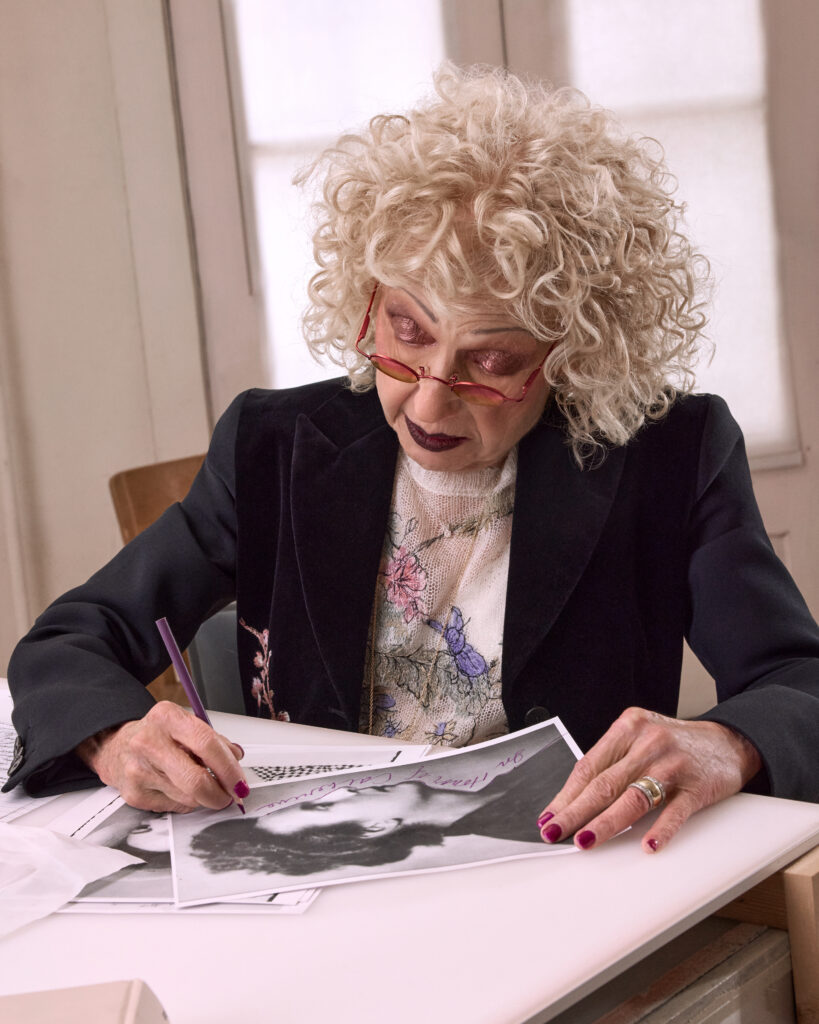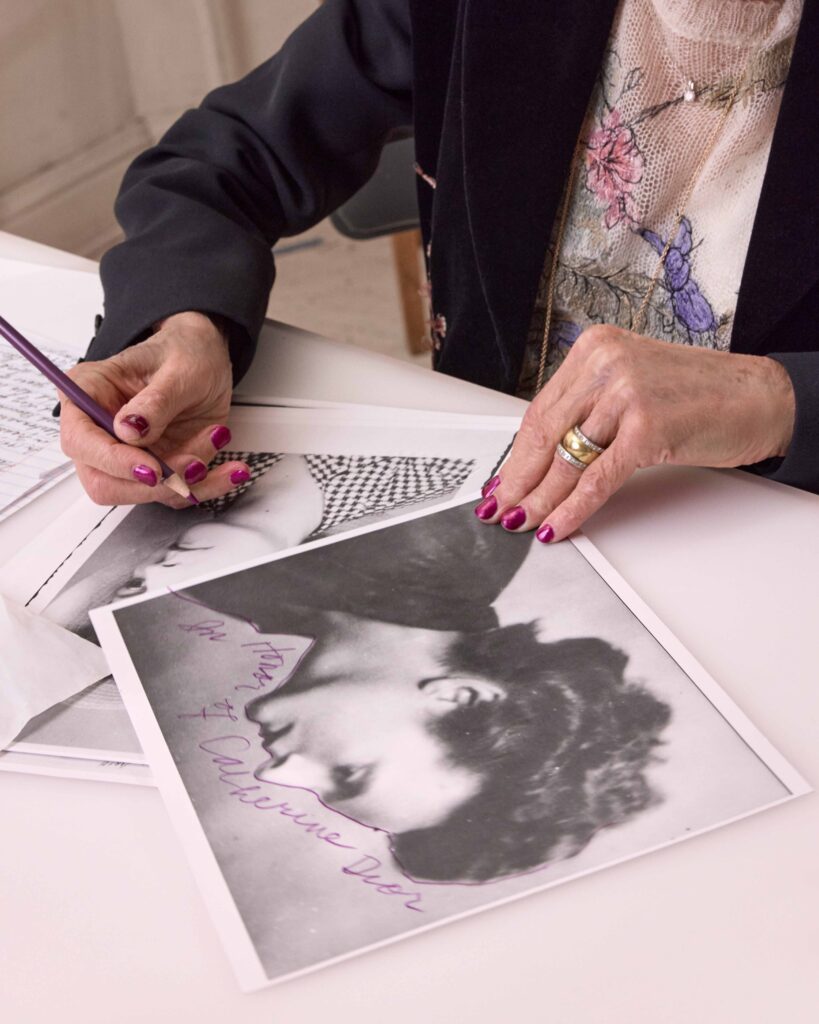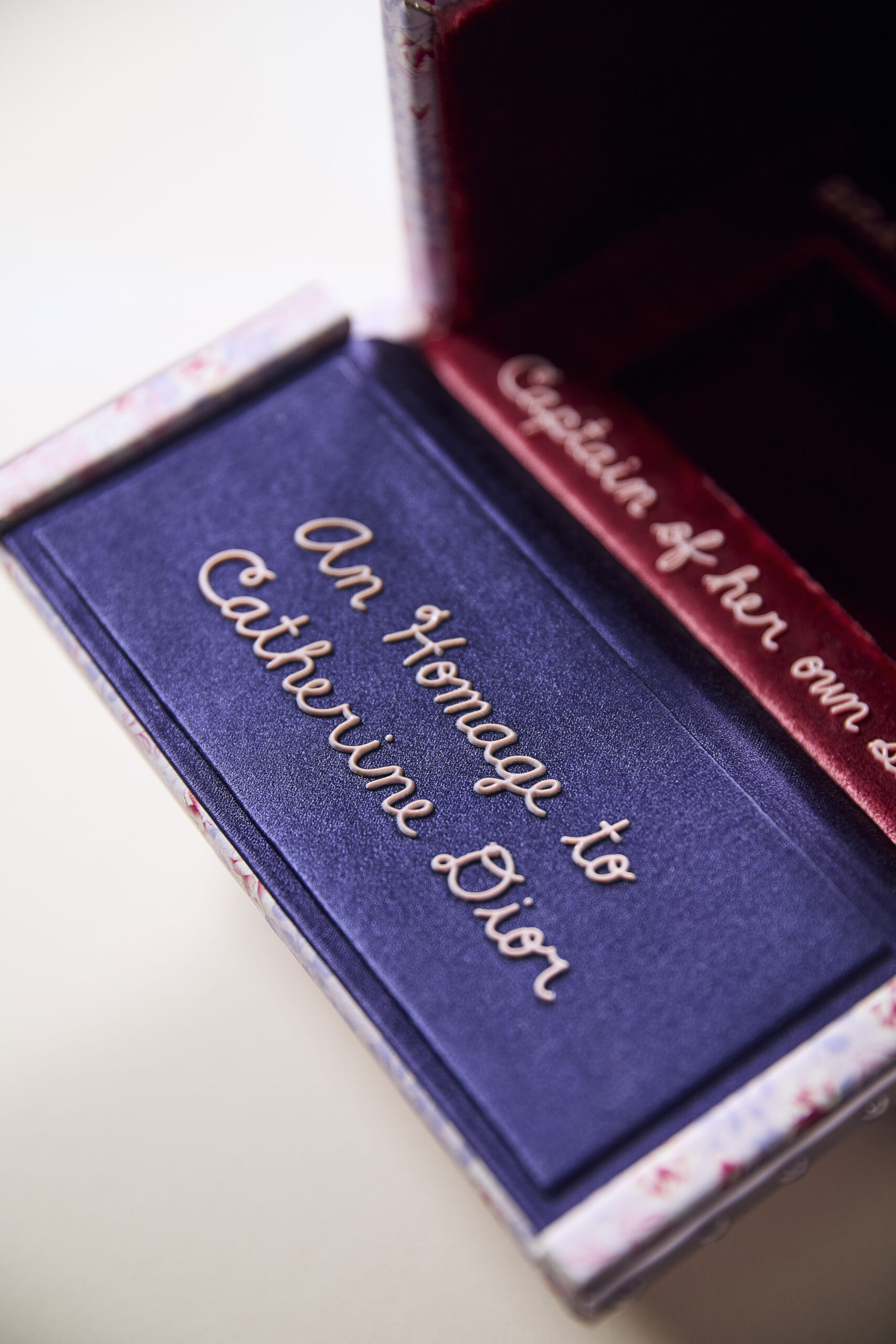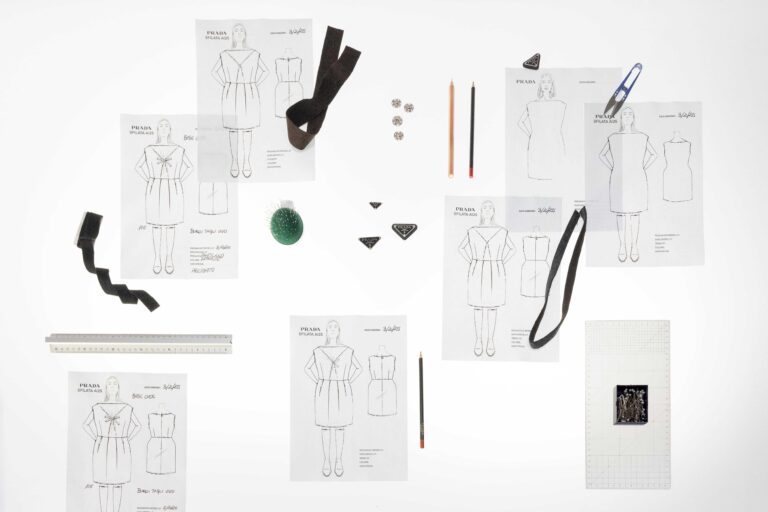
In a puff of fragrance, hand-embroidery, and tulle, artist Judy Chicago has reimagined Miss Dior. The initiative, which follows Chicago’s striking installation for the maison’s Spring/Summer 2020 Haute Couture show and a series of limited-edition Lady Dior purses, pays tribute not to the man whose name tends to prick ears and draw the spotlight, but to the house’s enduring muse: Catherine Dior.
The Miss Dior x Judy Chicago perfume trunk—of which only 25 have been made—is the third in a series of super-rare, artist-designed boxes created for Dior perfumes using the atelier’s unique finesse. Inspired by Chicago’s vibrant designs, Dior Perfume Creation Director Francis Kurkdjian punched up the original eau with bright citrus for an only-found-here version of Miss Dior. The handcrafted trunk features a poly-chromatic portrait of Catherine, floral motifs, and bright shades of pink and blue adapted from The Dinner Party—Chicago’s ground-breaking 1970s tribute to women’s overlooked role in history. Inside, red velvet contrasts with vivid florals.
Christian’s sister was a decorated member of the French Resistance and a concentration camp survivor, whose eclipsed reputation strikes a familiar chord for Chicago, who has herself fought to make space for female voices in the art world and historical record. Here, the 85-year-old artist plucks the threads that tie her and Catherine’s work together.

How did you reinterpret Catherine Dior’s legacy for a new audience?
Catherine Dior is a heroine in the long line of women whose contributions have been unacknowledged and lost to history. This situation is something that I have worked to redress since I created The Dinner Party, 1974–79. Without Catherine’s decades of work to preserve Christian’s legacy, the House of Dior would not be what it is today.
How did craft shape the visual language of this tribute?
The perfume bottle is encircled by a hand-embroidered bow, which conveys Catherine’s courageous attitude towards life after her imprisonment. In contrast to many Holocaust survivors who were deeply embittered by their experiences, Catherine’s motto became “Aime la vie”—“Love life.” When I was working on The Dinner Party, I realized that needle work is—like many creative activities associated with women—undervalued, something I wanted to challenge by demonstrating that thread could be like a brushstroke.

Walk us through the experience of folding your artistic practice into the story of this collection.
When I began collaborating with Dior, I wondered if it would be possible to introduce personal meaning into the world of fashion. This was the task I set for myself on all my projects with them, one that I hope I have achieved through the Catherine Dior trunk.
How would you interpret Catherine Dior’s credo of “Aime la vie” today?
It embodies an attitude towards life that I have also tried to embrace, also expressed in the motto “Choose Life,” which is a Jewish mandate (both my husband Donald and I are Jewish). Even in the darkest of times, one must choose hope, something that seems more important now at this moment in history than ever before.









 in your life?
in your life?

